Publications

May 6, 2009
This report provides a snapshot of how youth are doing in Carroll, Coos, and Grafton counties and describes some of the difficulties they and their communities face as they negotiate the transition to adulthood. The study is based on data from several agencies that collect county- and community-level information about youth, as well as from interviews with individuals working with youth in each…

May 4, 2009
In New Hampshire, workers fare better than workers nationally, yet one-quarter of Granite State workers do not have paid sick days. The lack of paid sick days places workers in a bind. They are forced to choose between caring for a sick family member or themselves and losing pay. This brief suggests that the long-term benefits of workers having paid sick days out way the cost for employers…

May 1, 2009
The analysis shows that more than 500,000 rural families, or almost 9 percent of rural families, will become newly eligible for the Child Tax Credit under the expansion included in the American Recovery and Reinvestment Act. Within these families are an estimated 900,000 rural children. The proportion of urban families benefiting from the expanded Child Tax Credit is slightly lower than in rural…

April 1, 2009
Essays from national experts affiliated with the “think-do” tank , the Financial Innovations Roundtable, housed at the Carsey Institute at the University of New Hampshire.
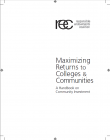
February 1, 2009
Colleges and universities depend tremendously on their local communities in numerous ways, and through community investment, have a unique opportunity to support these communities in turn. This handbook provides an overview of community investment, including a step-by-step guide to implementing a community investment program that maximizes both financial and social returns.
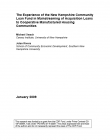
January 1, 2009
This study aimed to provide evidence of the extent to which a financial product―land acquisition loans for manufactured home parks―performed well and was adopted by mainstream financial institutions. The study hypothesized that The New Hampshire Community Loan Fund’s effective introduction of the new loan product, coupled with excellent loan performance, led banks to adopt the loan product.
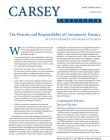
January 1, 2009
Community development finance has played an important role in community revitalization over the past 30 years and may be even more important in the current financial climate. But today community development finance institutions (CDFIs), as well as many community banks and credit unions face significant funding stress. This brief highlights the importance of refocusing support of CDFIs to sustain…
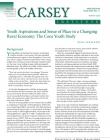
January 1, 2009
Youth in rural Coös County have surprisingly strong ties to their communities, finds a new report from the Carsey Institute. The brief is the first to report on a ten-year panel study of students who began seventh and eleventh grades in 2007 in Coös, New Hampshire's northernmost and most rural county.
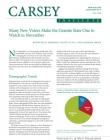
December 18, 2008
A third of potential voters in New Hampshire during the fall of 2008 have become eligible to vote in the state. Further, these potential new voters are more likely to identify with the Democratic Party and less likely to identify as Republicans than are established New Hampshire voters, contributing to the state's purple status.
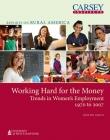
December 16, 2008
Seventy-three percent of married rural mothers with children under age 6 work for pay. As men's employment rates have dropped over the past four decades, more rural women are working to keep the lights on at home. Rural women are just as likely as their urban counterparts to work for pay, but they earn less, have fewer occupational choices, and have seen their family income decline as men…

November 24, 2008
The percentage of rural children living in married-couple families dropped to 68 percent in 2008, one percentage point below that of children in metropolitan areas. In 1990, 76 percent of rural children and 72 percent of metropolitan-area children were living in married-couple families. But while marriage declined in both areas in the 1990s, urban rates bottomed out at 68 percent in 1998. The…
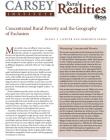
November 19, 2008
One-half of rural poor are segregated in high-poverty areas, a new policy brief co-published by the Carsey Institute at the University of New Hampshire and Rural Realities. This brief highlights the challenges faced by America's rural poor, particularly as they are physically and socially isolated from middle-class communities that might offer economic opportunities.
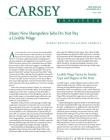
October 21, 2008
As the U.S. economy falters and recession looms, 79 percent of jobs in New Hampshire do not pay a wage sufficient for single-parent families with two children to provide basic needs such as housing, food, transportation, child care, and health care. Carroll County has the lowest percentage of livable wage jobs, with only 13 percent of jobs paying a livable wage for single-parent families with two…
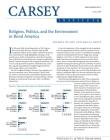
October 14, 2008
Reflecting the heterogeneous nature of rural America, rural Americans are divided primarily along religious lines on their perspectives of environmental conservation and climate change. And as rural voters and environmental issues become key issues in the upcoming presidential election, this religious divide presents a challenge to political candidates.
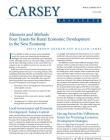
October 1, 2008
Rural communities working to find strategies for success in today's economy need to rethink the tools they are using. Brown-Graham is the executive director of the Institute for Emerging Issues and a policy fellow at the Carsey Institute. William Lambe is the associate director at the Community and Economic Development Program at the School of Government, University of North Carolina at…
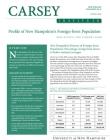
September 12, 2008
At the turn of the 20th century, New Hampshire had over 88,000 foreign-born persons, over 15,000 more than it has today. In 1900, the state's concentration of foreign born (21 percent) was higher than the national average percentage and more than three times the current percentage of 6 percent in the state. In 1900, New Hampshire ranked 15th of all states in percentage of the foreign-born…
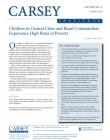
August 20, 2008
New U.S. Census Bureau data released in August highlight increasing similarities of poverty rates between children in urban and rural communities. This common indicator of child well-being is closely linked to undesirable outcomes in areas such as health, education, emotional welfare, and delinquency.
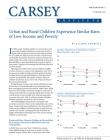
August 13, 2008
Data in this brief shows that the percentages of children living in low-income areas and poverty over the past fifteen years in rural and urban America are converging.
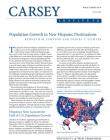
August 7, 2008
Natural increase—more births than deaths—is now the major engine of Hispanic population growth in many large metro areas and their suburbs, as well as numerous smaller metropolitan areas and rural communities. Hispanics now account for half of U.S. population growth, and Hispanic population growth is the reason many communities grew instead of declined.
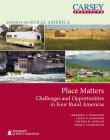
July 17, 2008
A survey of 7,800 rural Americans in 19 counties across the country has led to the Carsey Institute's first major publication that outlines four distinctly different rural Americas—amenity, decline, chronic poverty, and those communities in decline that are also amenity-rich—each has unique challenges in this modern era that will require different policies than their rural neighbors.